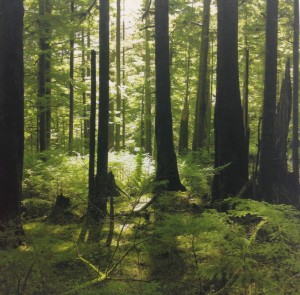
While bamboo does work for portraits, its texture and rich colour reproduction make it an ideal medium for scenic nature prints. Your Photolab technician can help you explore all the possibilities.
According to the ever-reliable internet, bamboo paper was in invented in China around 105 AD. I believe that makes it the oldest form of paper after papyrus. Despite this history, few people seem to be aware that bamboo makes an excellent photo paper. While previous Photoblog posts have proclaimed the wonders of bamboo paper (most notably here, but these as well) I will briefly summarize why it deserves your consideration.
To begin with, there’s the texture. Bamboo as you probably know is a fibrous material, and the texture alone gives photo prints a rich, deep and ultimately unique look. Yet there’s an even greater benefit to this fibrous texture: it results in crisp, brilliant colour reproduction. The macro print described in this post offers an accurate account of the detail bamboo printing is capable of providing. You can also be assured that a bamboo print’s magnificent colour will last. Bamboo is one of those all-natural ‘super-materials’—long-lasting and ultra durable. If you’ve ever owned bamboo flooring, furniture or clothing you’re no doubt familiar with its toughness, and photo paper is no different. Images printed on bamboo paper experience little or no colour fading with time, which is why they’re often referred to as ‘archival’ prints. Being a long-lasting natural material, bamboo photo paper is also environmentally friendly.
Somehow, despite all of these benefits, bamboo prints are a surprisingly uncommon choice. This, however, ends up being yet another advantage because when people see a bamboo print on your wall chances are they have never seen anything like it before, which in turn makes you seem very original and knowledgeable about photography. Which, if you are already a fan of bamboo prints, you probably are.

